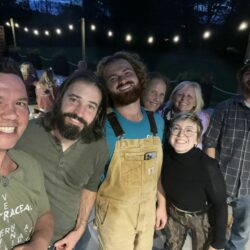This article was originally published by the Massachusetts Horticultural Society’s Leaflet, January 2024 Issue In First Person Written by: Russ Cohen, ELA Member For more than 50 years Russell Cohen has been…
Uncategorized
Registration for in-person event – The Albany Pine Bush Preserve
The Albany Pine Bush Preserve Address: APB Discovery Center — 195 New Karner Road, Albany, NY 12205 Date: Friday, February 23, 2024 Time: 12:30 am – 3:00 pm Description: You…
Registration for in-person event – Norcross Wildlife Sanctuary
Norcross Wildlife Sanctuary Address: 30 Peck Road, Wales, MA 01081 (Physical location for driving purposes) Date: Friday, February 23, 2024 Time: 10:00 am – 12:00 pm Capacity: Registration/seating is limited…
Protected: Letter To America: A Rewilding
There is no excerpt because this is a protected post.
Protected: Growing Native and Naturalized Perennials for Pollinators
There is no excerpt because this is a protected post.
Protected: Get to know the ELA Board of Directors!
There is no excerpt because this is a protected post.
Registration for in-person event – Mass Audubon Long Pasture Wildlife Sanctuary
Mass Audubon Long Pasture Wildlife Sanctuary Address: 345 Bone Hill Road, Barnstable, MA 02630 Date: Friday, February 23, 2024 Time: 10:00 am – 12:00 pm Capacity: Registration/seating is limited to…
Registration for in-person event – Scarsdale Public Library
Scarsdale Public Library Address: 54 Olmsted Rd, Scarsdale, NY 10583 Room: Meeting Room North South Date: Friday, February 23, 2024 Time: 3:00 pm – 5:00 pm Capacity: Registration/seating is limited…
Registration for in-person event – Jenkins Arboretum
Jenkins Arboretum Address: 631 Berwyn Baptist Road, Devon, PA 19333 Date: Friday, February 23, 2024 Time: 11:00 am – 3:00 pm Parking: There are about 40 total spaces available, which includes onsite…
ELA Annual Conference 2024 – In Person Locations
If you plan on joining ELA at an in person location for the Annual Conference, please fill out the form for the location you plan to attend below! With this…
The Rewind: Winter 2002-2003 Native Plants for Winter Interest
This article has been reprinted as part of The Rewind where ELA’s publication chair selects articles from the ELA archives that she thinks will excite today’s readers. This article was…
The Rewind: Fall/Winter 1998-1999 Native Shrubs for the Winter Garden & Fall and Winter Fruit for Birds
This article has been reprinted as part of The Rewind where ELA’s publication chair selects articles from the ELA archives that she thinks will excite today’s readers. This article was…


